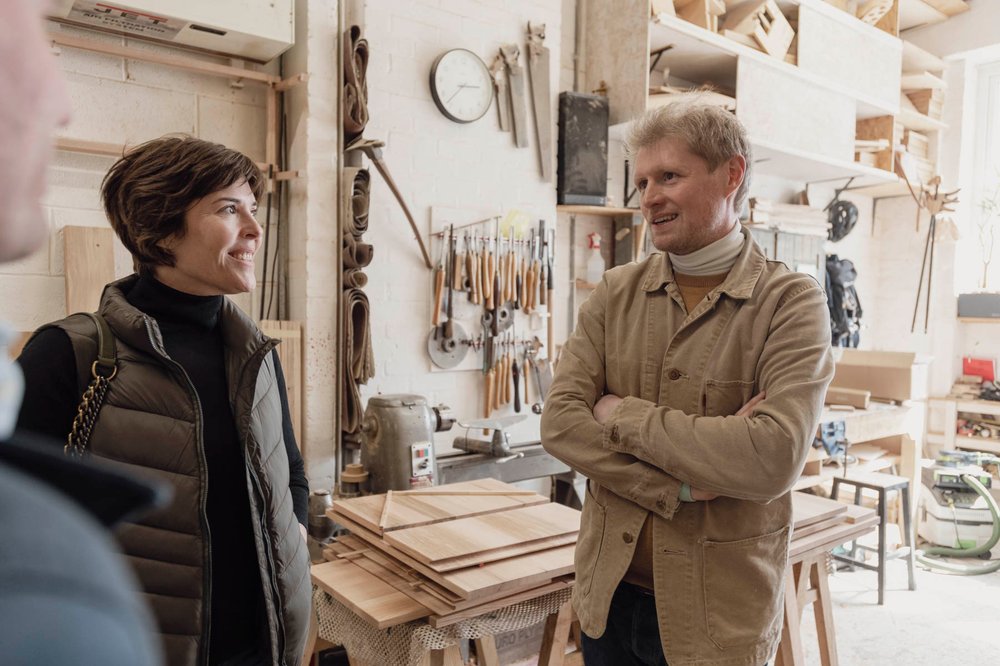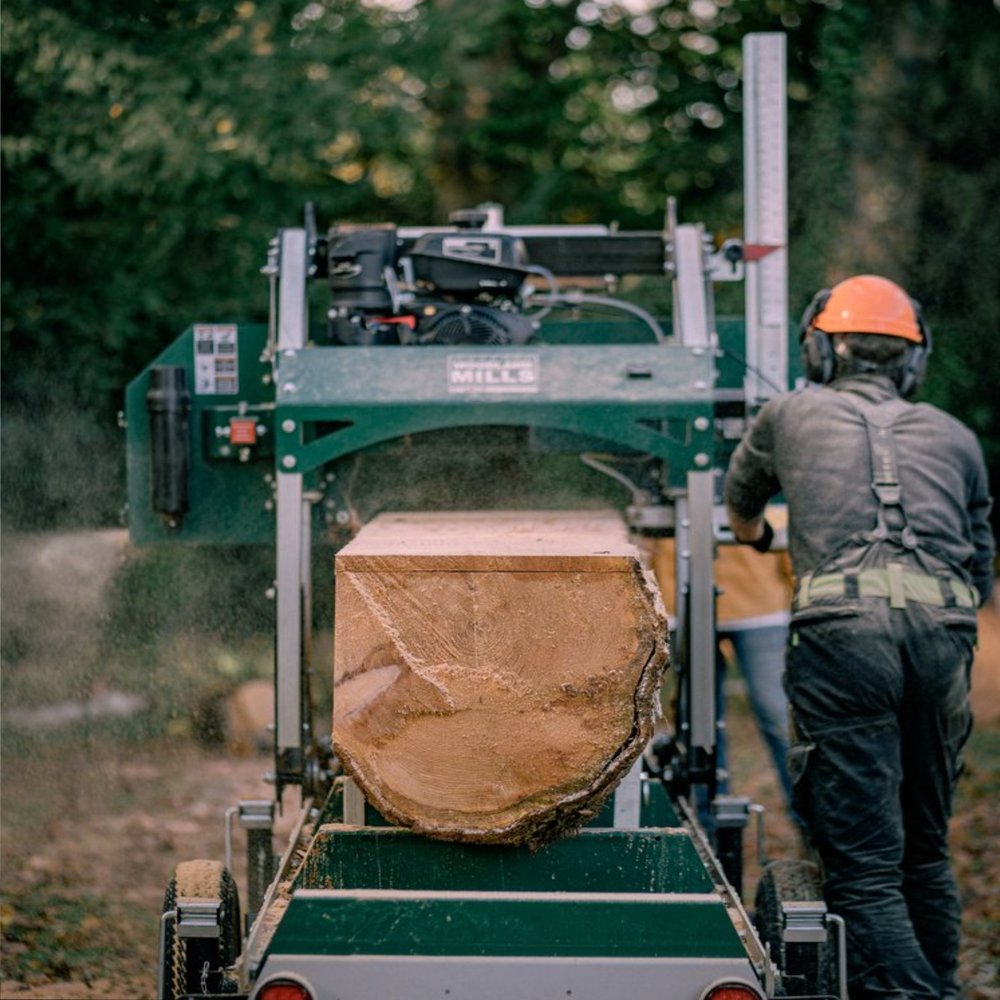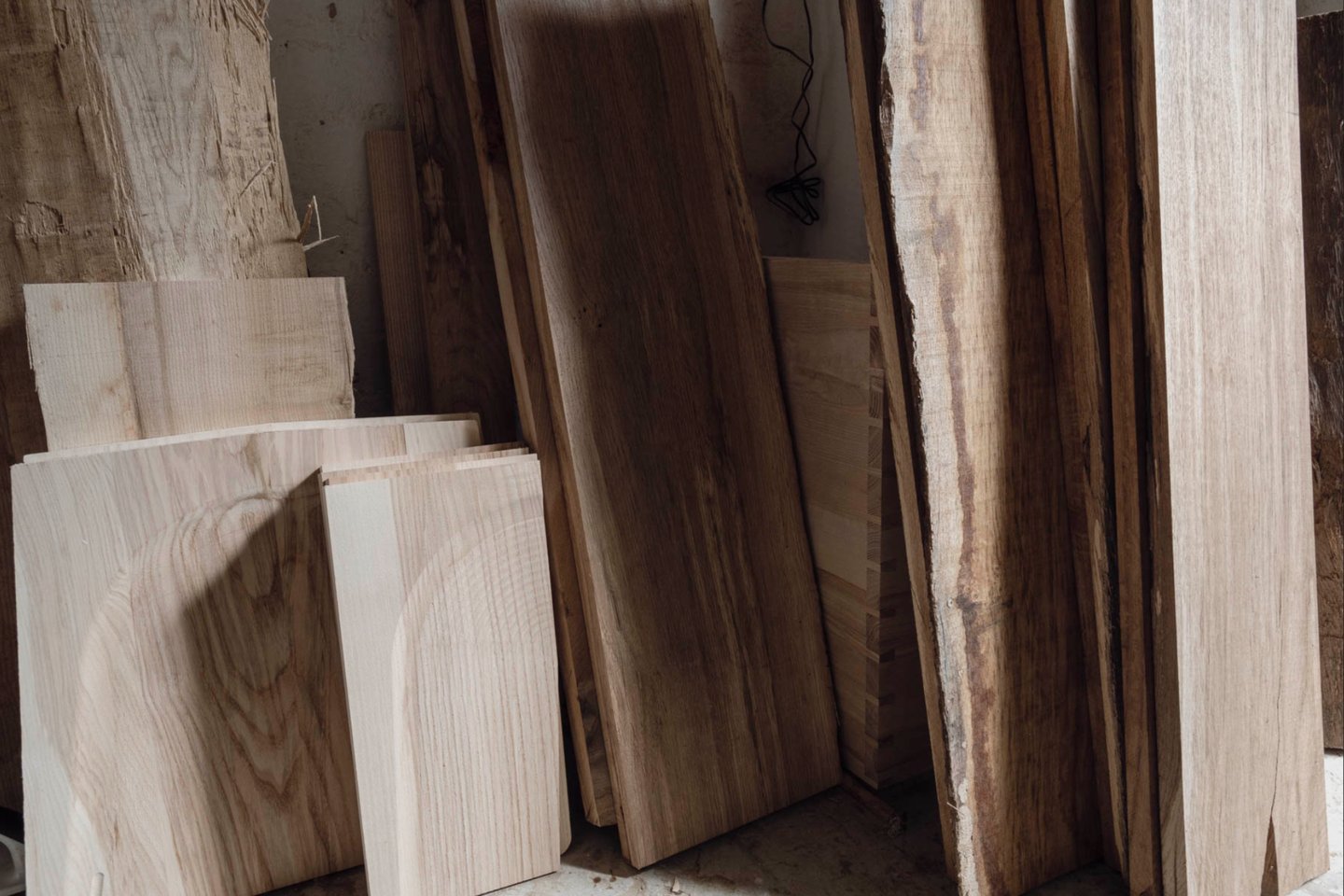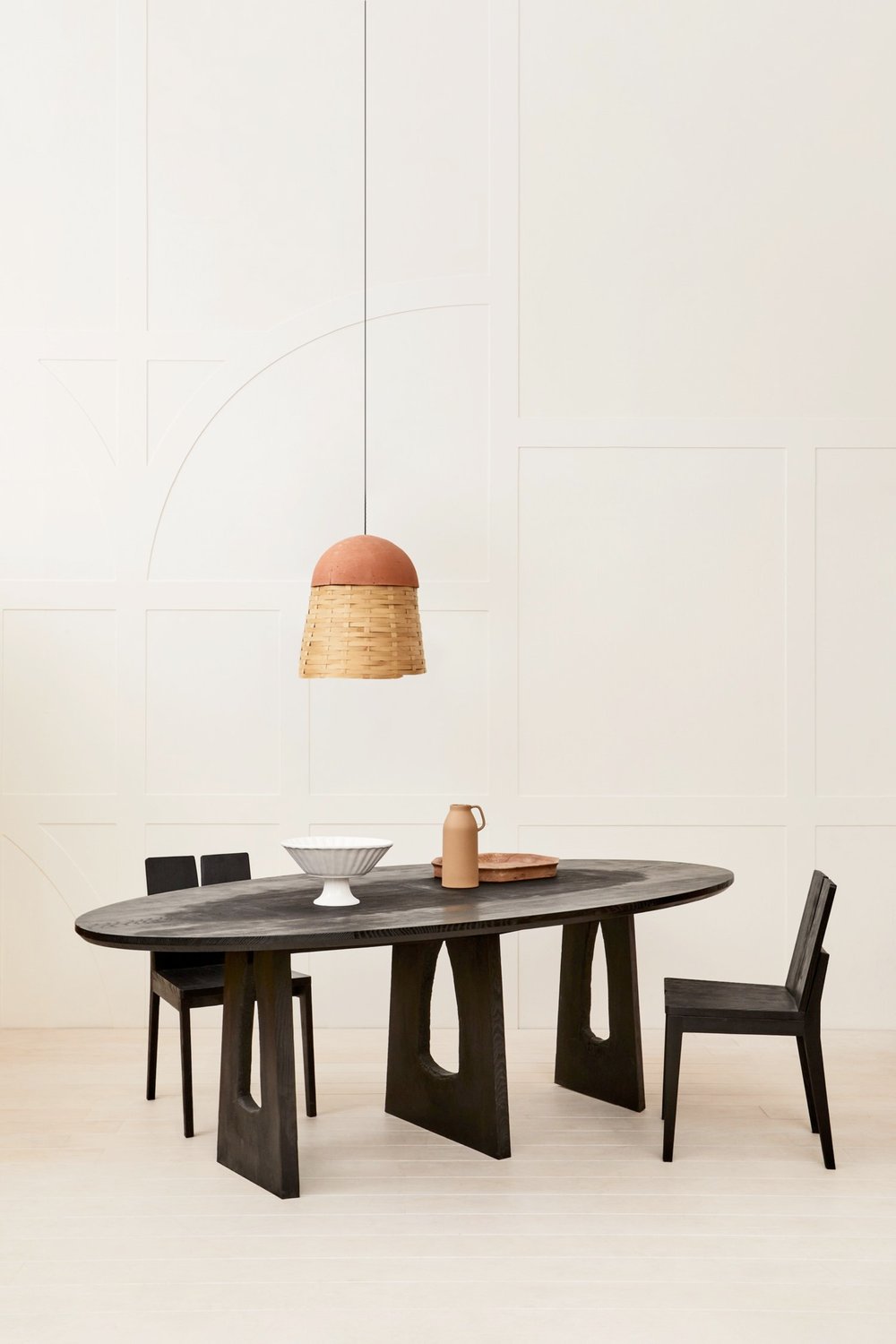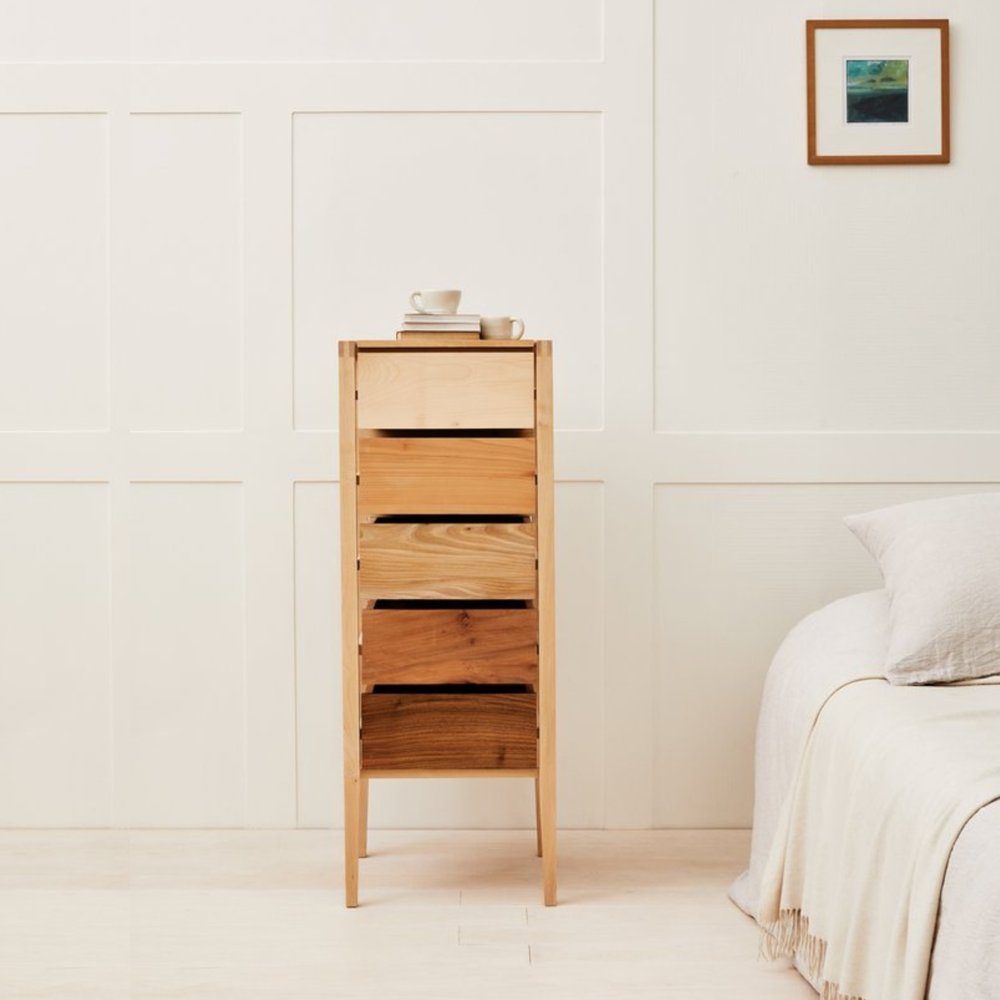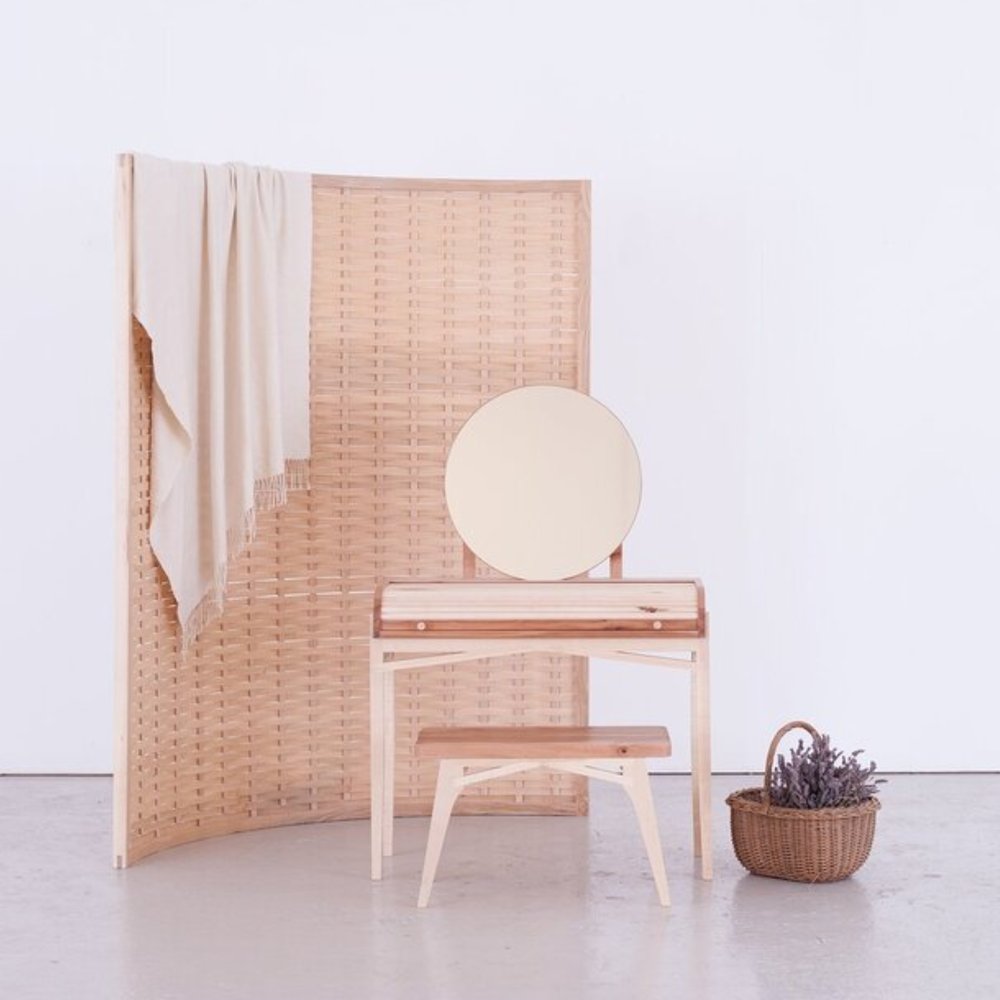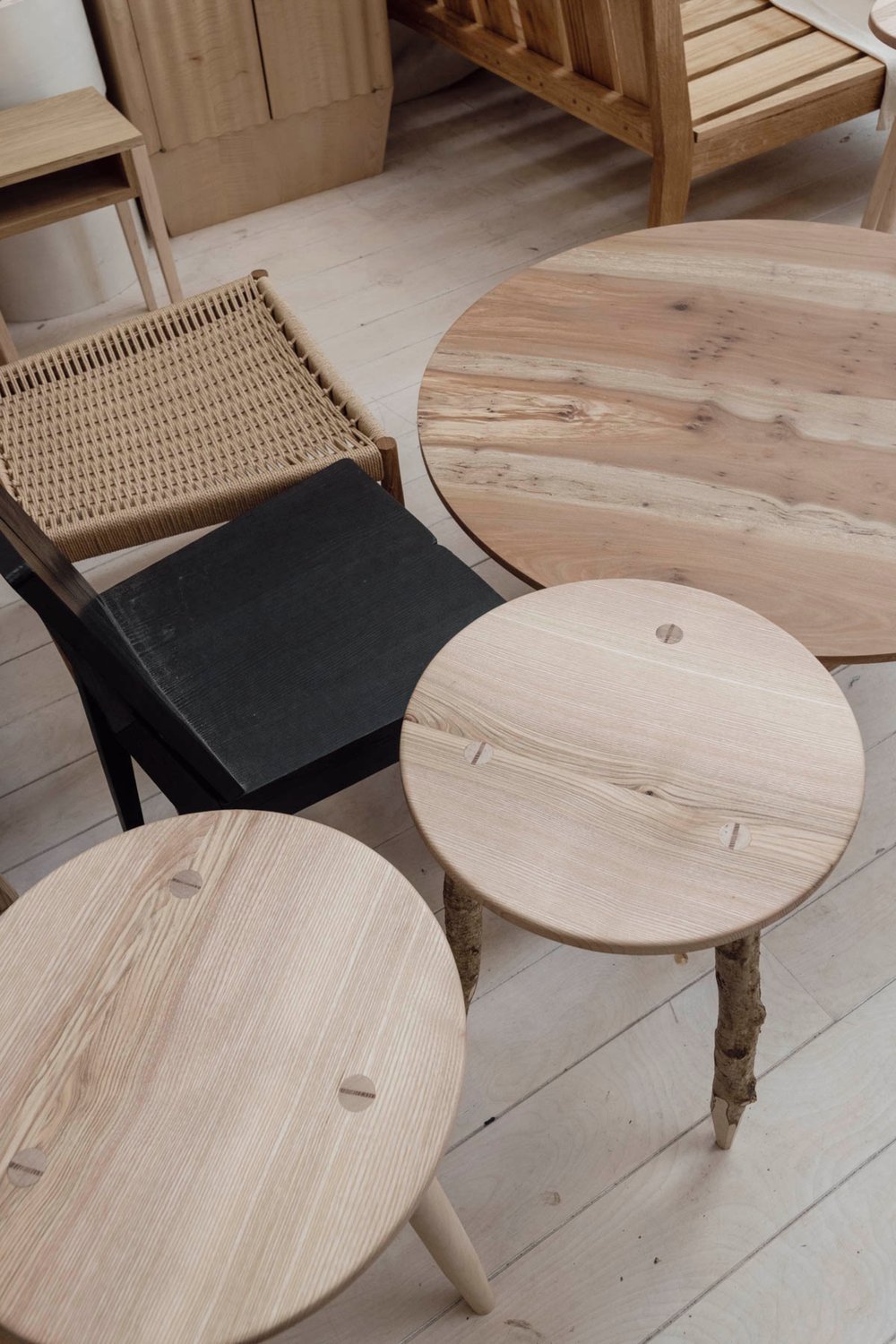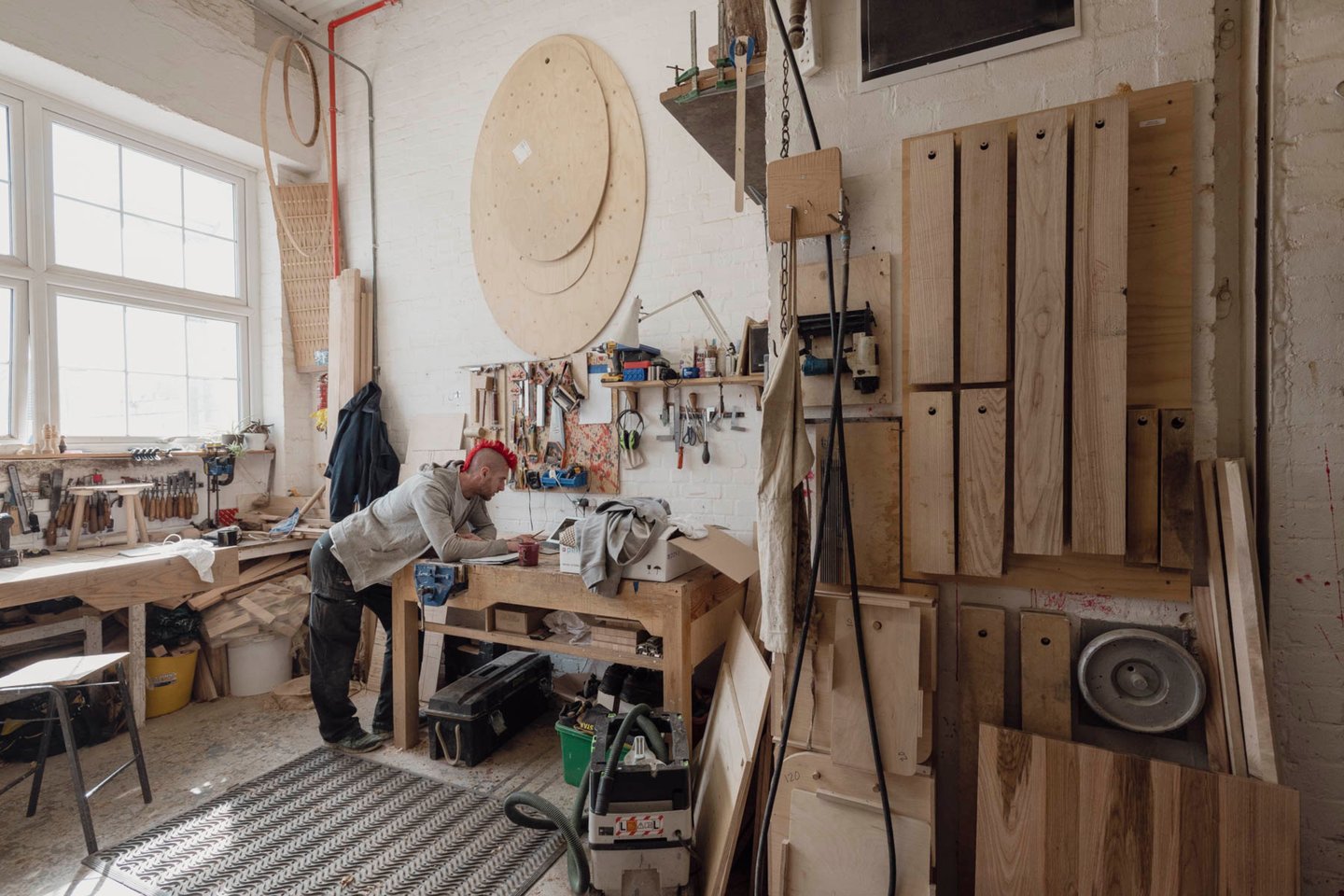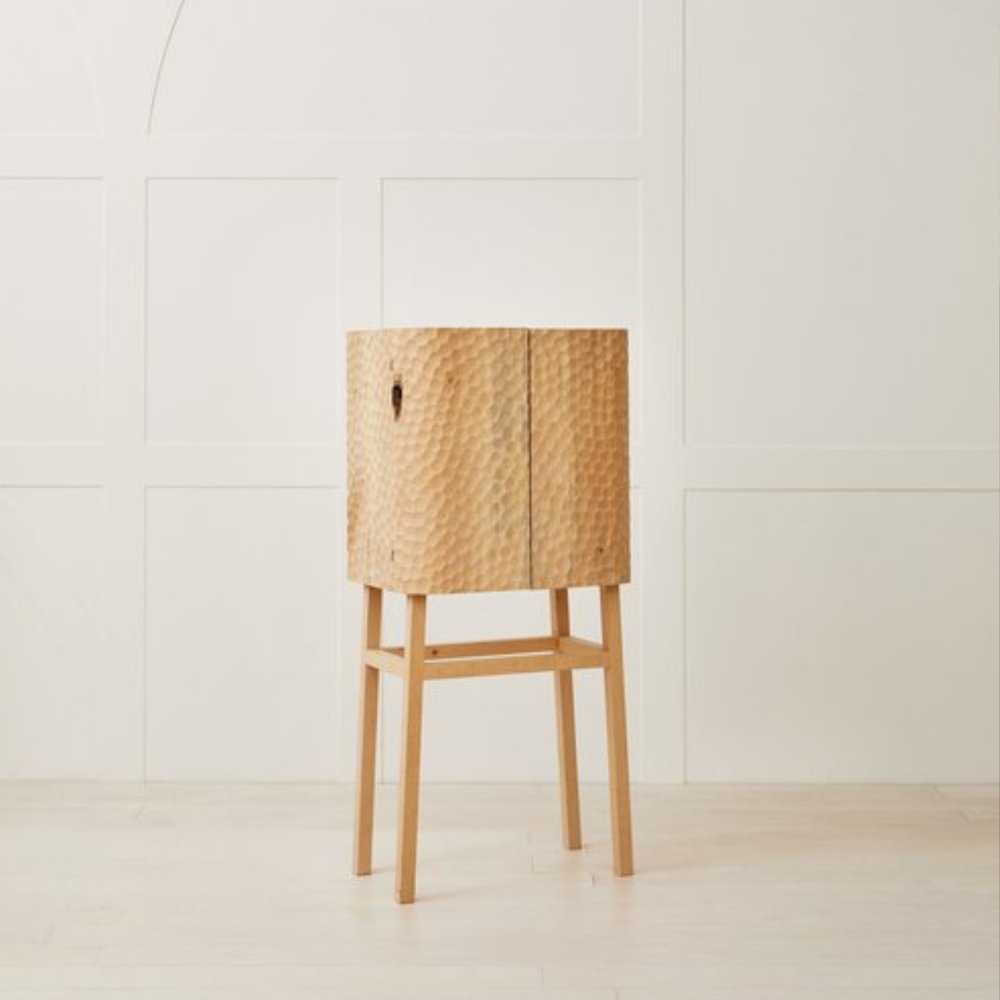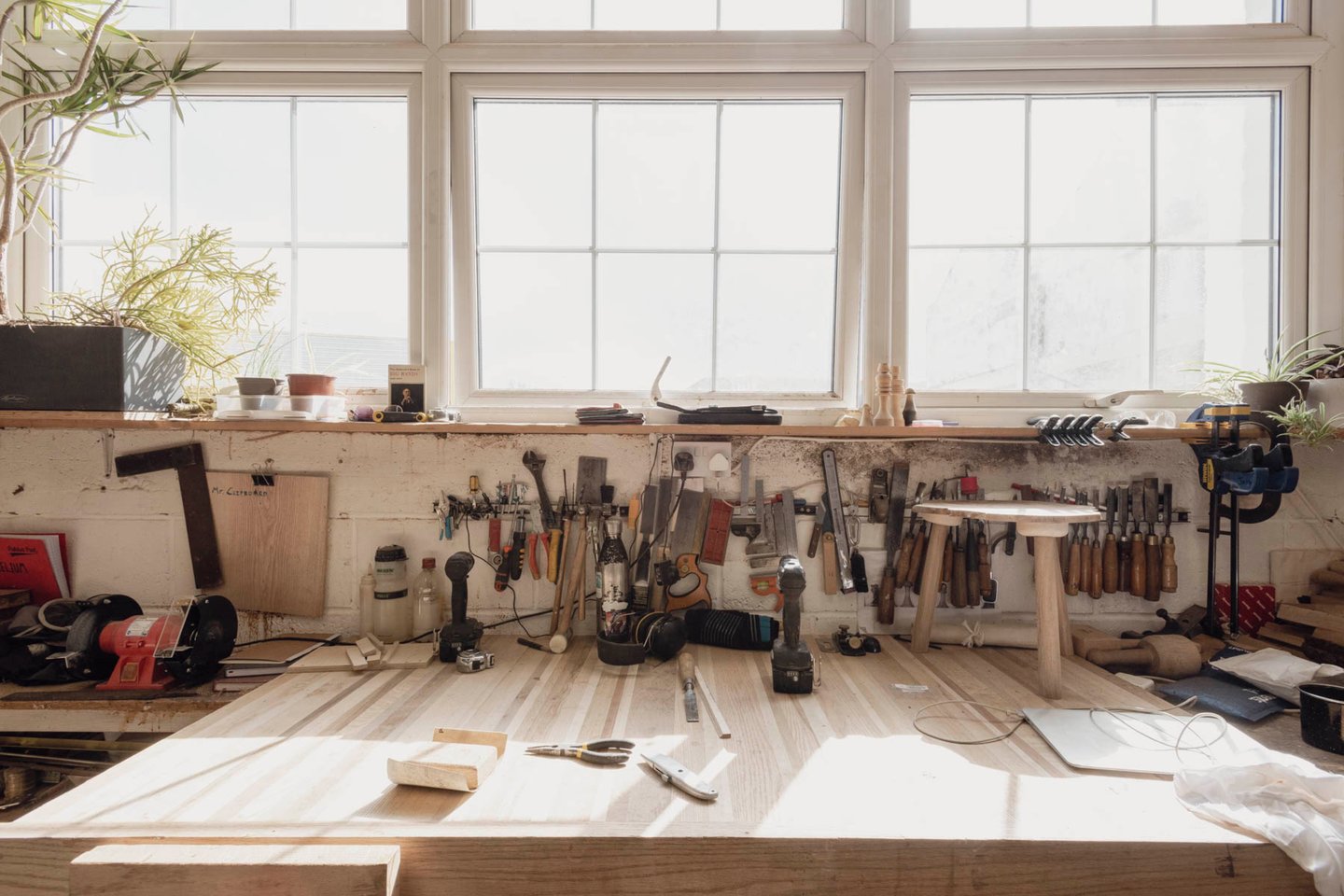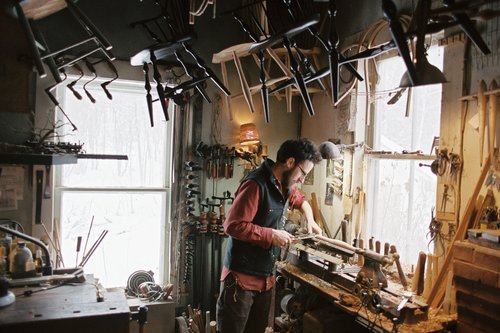Circular by design
“Every piece of furniture that we create comes with a carbon cost, calculated via Life Cycle Assessment,” Brogan explains. Through photosynthesis, trees take in carbon dioxide and give off oxygen as they grow, meaning timber acts as a carbon sink once the tree is felled. This carbon stays locked up for as long as the wood is in use.
By measuring the energy used in the transport, drying and machining of the timber and components, adding these together with any additional materials and finishes used, and deducting from the carbon sequestered by the timber, the studio can accurately measure the impact of a given piece of furniture. With few exceptions, their solid timber pieces are all carbon negative.
Offcuts are used in production of smaller components, while wood chips go back to the mill, to be used as fuel for the kilns to dry the next batch of timber.
The location of the new timber mill in Kent was part of a push to become resource self-sufficient, Seb mentions. An agreement to manage the farm’s 200 acres of mixed hardwood forest, will eventually provide sufficient material for the studio’s product range. But for now, the most intimate bespoke commissions involve customer's own felled trees, which may have been storm damaged or are nearing their natural life expectancy. These are milled, the timber dried, and the wood used for the client’s needs - perhaps a kitchen table or other item of bespoke furniture. The ultimate heirloom piece.


